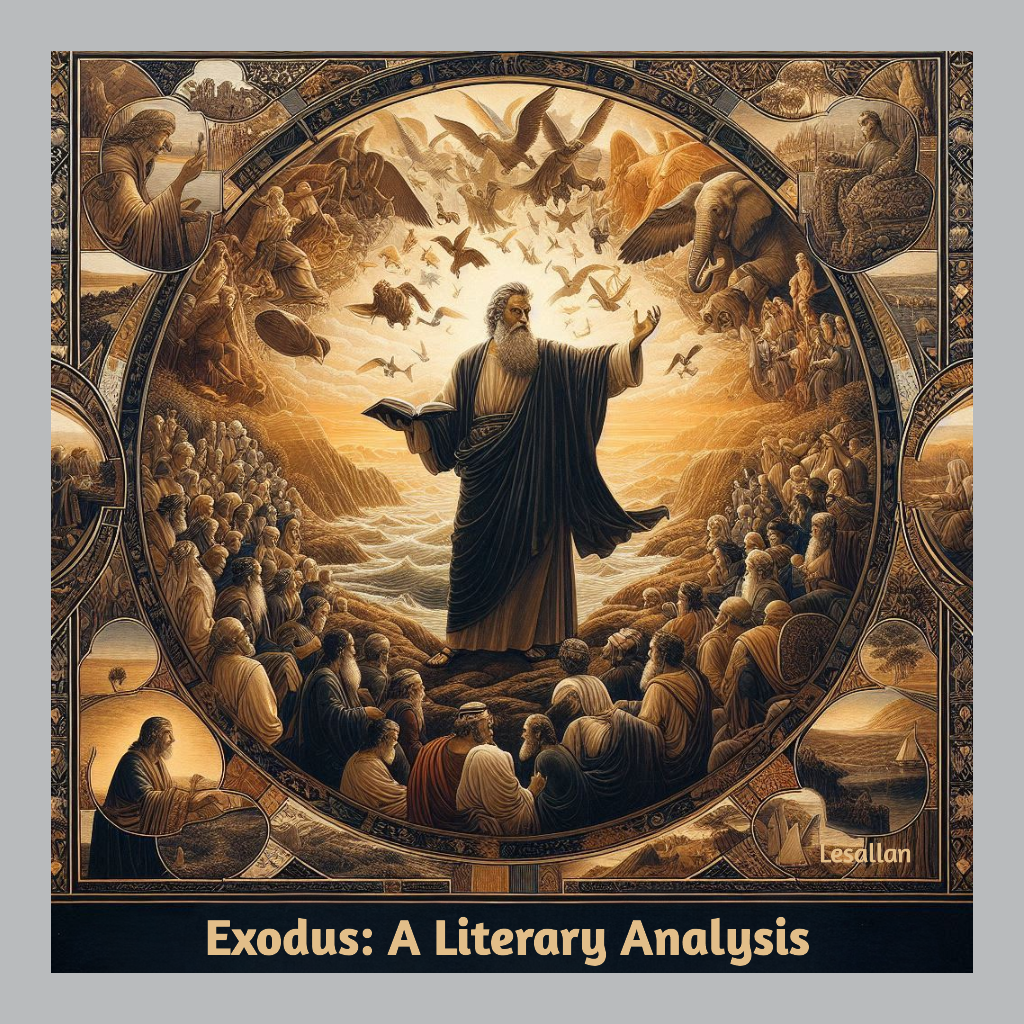Lesallan – August 21, 2024

Exodus: A Literary Analysis
The book of Exodus, part of the Pentateuch, is a rich tapestry of various literary styles, each contributing to the overall narrative and theological message. Understanding these styles is crucial for proper interpretation.
The first part of Exodus (Exodus: 1-18, NIV) is primarily narrative, a storytelling journey that brings the Israelites’ enslavement in Egypt, the birth and calling of Moses, the plagues, and the eventual exodus from Egypt to life. This narrative style is not just a recounting of events, but a means to engage you on a personal level, making you feel the struggles and triumphs of the Israelites.
Following the narrative, Exodus transitions into a legal genre with the giving of the Law at Mount Sinai (Exodus: 19-24, NIV). This section includes the Ten Commandments and various other laws governing Israelite society. The legal style, with its prescriptive nature, provides specific instructions and regulations, making the audience feel the weight of the laws and the profound importance of the covenant relationship between God and His people. Understanding this genre is essential for interpreting these chapters, as it emphasizes the ethical and moral standards expected of them (Walton et al., 2000).
Another significant literary style in Exodus is the detailed instructions for building the Tabernacle (Exodus 25-31, 35-40, NIV). These chapters are descriptive and technical, outlining precise measurements, materials, and procedures. This genre underscores the importance of worship and God’s presence among His people. It also reflects the meticulous nature of God’s instructions, impressing upon the audience the need for obedience and reverence in worship (Walton et al., 2000).
Amidst the instructions, there is a narrative interlude recounting the incident of the golden calf (Exodus 32-34, NIV). This return to the narrative style is significant as it contrasts the preceding and following instructions, thereby highlighting the consequences of disobedience and the need for repentance and restoration. It serves as a poignant reminder to the Israelites of their propensity for disobedience and God’s mercy and justice.
Each literary style in Exodus shapes how we read and interpret the text. The narrative sections invite us to enter the story, empathizing with the characters and understanding the unfolding of God’s plan. The legal sections require a different approach, focusing on the principles and regulations that govern Israelite society and their covenant relationship with God. The detailed instructions for the Tabernacle call for careful attention to the specifics, reflecting the importance of worship and God’s presence.
Understanding these genres helps us appreciate Exodus’ multifaceted nature and theological depth. It reminds us that the Bible is not a monolithic text, but a collection of diverse literary forms, each contributing to the overall message of God’s redemptive work.
Blessings,
Lesallan
References:
Bible Project. (2017, June 22). Watch: Biblical Literary Styles Bible Intro Video |
BibleProjectTM. BibleProject. https://bibleproject.com/explore/video/literary-styles-bible/
New International Version. (2019). New international version Bible – read free online. Bible
Study Tools. https://www.biblestudytools.com/niv/
Walton, J. H., Victor Harold Matthews, & Mark William Chavalas. (2000). The IVP Bible
background commentary Old Testament. Downers Grove, Ill. Intervarsity Press.



2 Comments
minihints · August 23, 2024 at 1:11 pm
O que eu não percebo é que você não é mais bem-favorecido do que você é agora Você é muito inteligente Você sabe muito sobre esse assunto me fez acreditar nisso de vários ângulos diferentes É como homens e as mulheres não ficam fascinadas até que seja algo a ver com Lady gaga Suas próprias coisas excelentes O tempo todo cuide disso
탑플레이어머니상 · August 26, 2024 at 9:00 am
탑플레이어 포커 머니상은 안전하고 신뢰할 수 있는 포커 머니 거래 플랫폼입니다. 탑플레이어포커머니상 사이트 추천: https://inblog.ai/topplayerpoker
Comments are closed.